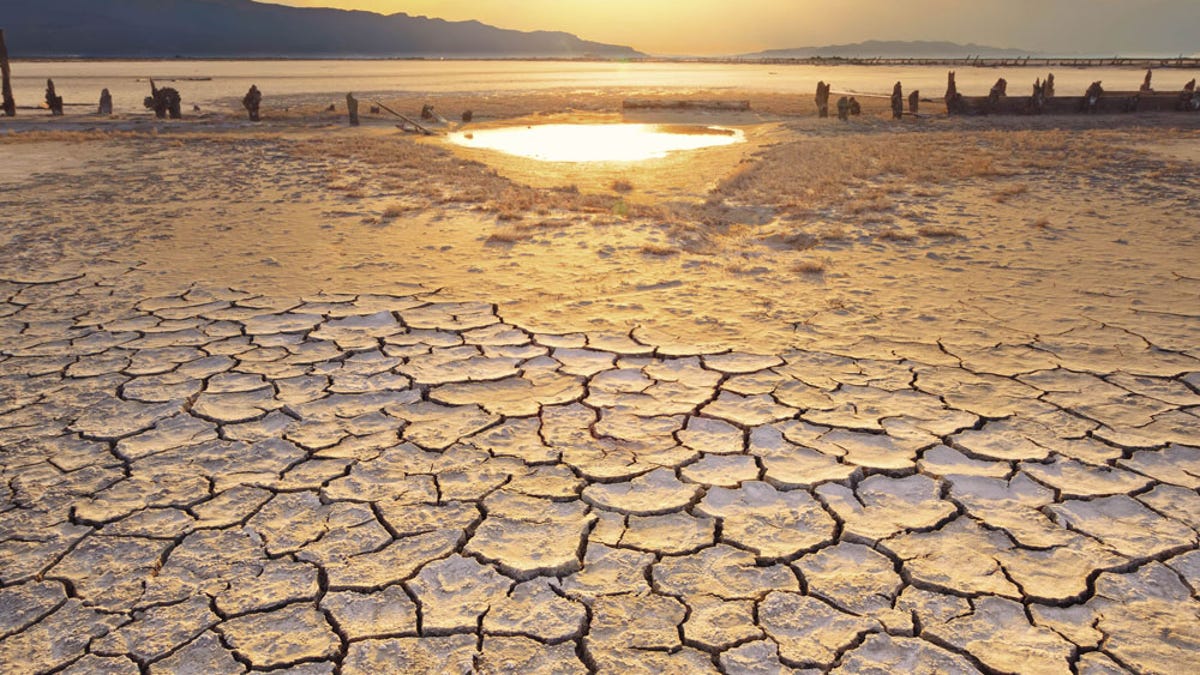Megadrought in the West Is Worst in More Than 1,200 Years
Nearly half of the drought can be attributed to human-caused climate change, a new study finds.

Current levels of dryness in the US Southwest and northwest Mexico haven't been seen since medieval times.
For years, scientists have wearily watched the trend toward megadrought in the American West, and new data has helped clarify the severity of the situation. In the Southwest, it's the worst drought since medieval times.
Despite heavy precipitation in some areas late last year, 2021 was brutally dry overall in the Western US and northwestern Mexico. It was so dry, in fact, that it capped a 22-year period between 2000-2021 that's unmatched over the past 12 centuries.
"It's extremely unlikely that this drought can be ended in one wet year," Park Williams, a climate hydrologist at UCLA, said in a statement.
Williams is lead author on a study published in Nature Climate Change last week week that laid out the new status quo. He says human-caused climate change gets a significant portion of the blame.
"Without climate change, the past 22 years would have probably still been the driest period in 300 years ... But it wouldn't be holding a candle to the megadroughts of the 1500s, 1200s or 1100s."
The study estimates that 42% of the current megadrought in the Southwest can be attributed to human-caused climate change, which largely comes from the burning of fossil fuels for energy.
The current drought situation in the Western US.
Earlier studies compared current drought conditions to past centuries using data gathered from tree rings and other sources. They suggested current conditions weren't quite as dry as a megadrought the region experienced in the late 1500s, but after 2021, Park and colleagues expect that's changed.
"This drought will very likely persist through 2022, matching the duration of the late-1500s megadrought," the study's summary reads.
A megadrought is defined as two or more decades of prolonged drought. And the new study is another confirmation that some climatologists' bleakest predictions have come true.
In late September, before what seemed like a pretty good run of precipitation events in the West, 99% of the region was experiencing some level of abnormal dryness or drought, according to the US Drought Monitor. As of Tuesday, that number is down, but only to 95.3 percent.
Intense heat and dryness in recent years has helped fuel wildfires that have wreaked havoc, particularly along the West Coast of North America, where historic fires have torched millions of acres and multiple communities from Southern California to British Columbia.
Outlier events are also becoming increasingly common and serving as a sort of exclamation point to the overall trend of peril in the West. For example, temperatures soared to over 120 degrees Fahrenheit in Canada last summer. Also, a rare "snow squall" ripped its way across the Front Range of the Rocky Mountains in December, and wind gusts reached over 100 miles per hour in New Mexico, toppling thousands of trees near Taos Ski Valley. Weeks later, similar winds outside Denver helped drive a fire that tore through a suburban community.
Water supplies are also increasingly stretched thin as critical reservoirs along the Colorado River reached record low levels last summer.
Williams says it's important to think beyond the short term and that we may need to begin to consider more long-term water conservation efforts.
To illustrate the point: Currently, Denver and Colorado's Rocky Mountains are locked in a blanket of chilly ice and snow, but the latest update to the Drought Monitor shows conditions in the western parts of the state that feed the Colorado River have actually worsened over the past week.

